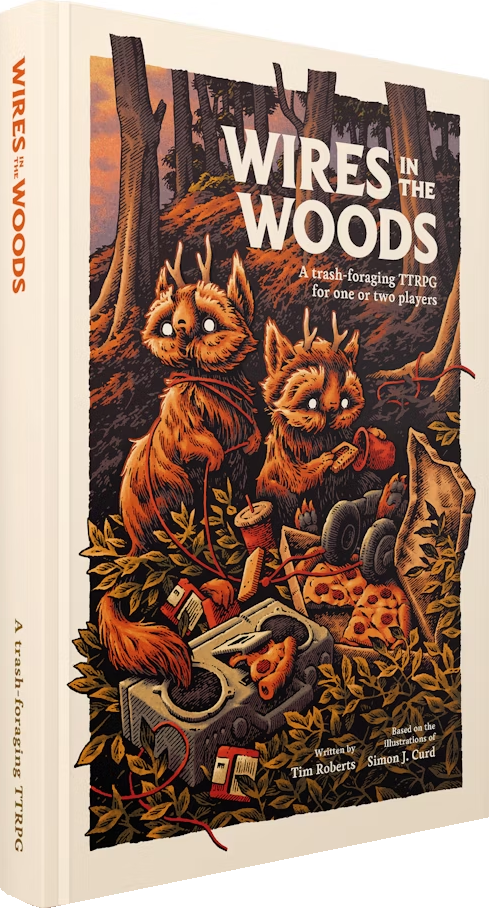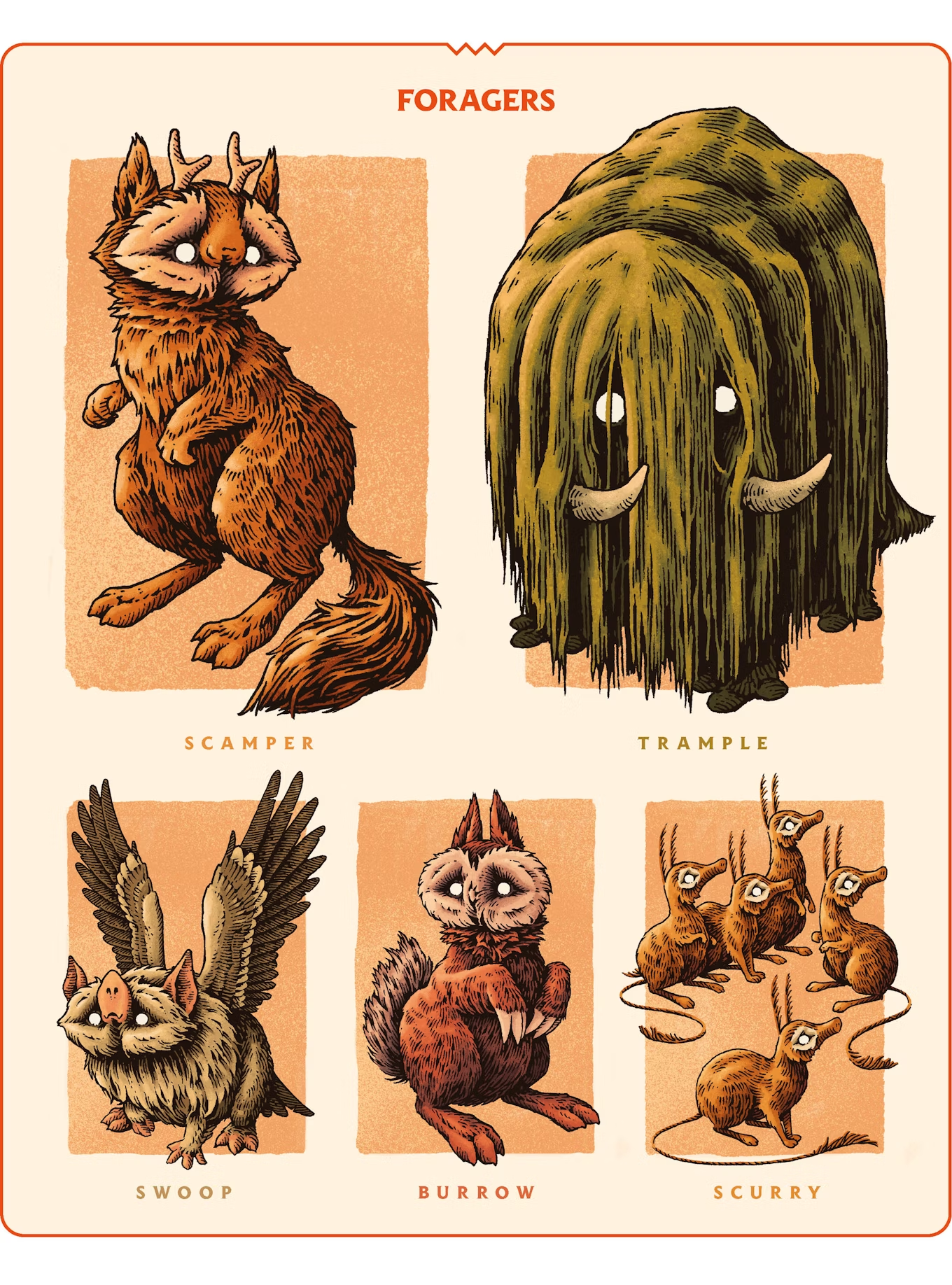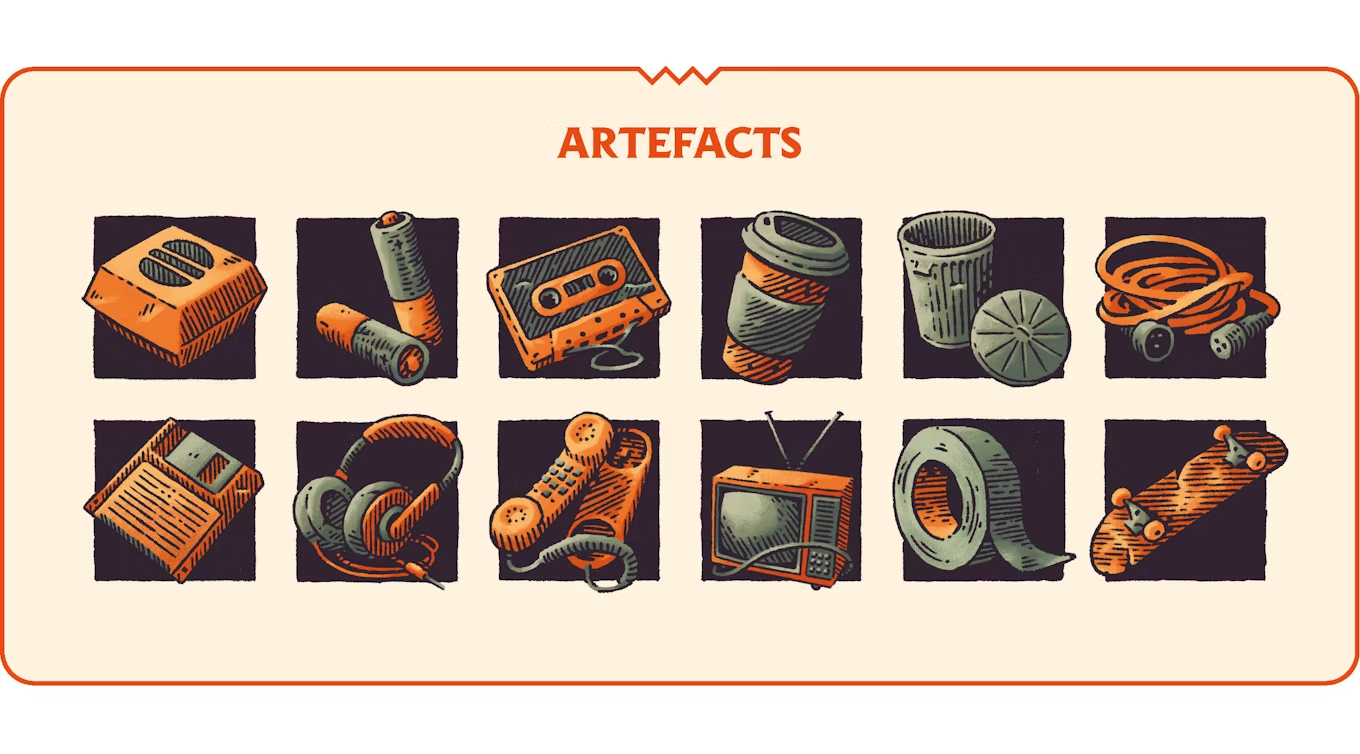Description
**Pre Order**
Release Date: 2025-09-30 this is an estimate
Wires in the Woods is a solo and two-player tabletop role-playing game in which you play a curious little forager in an abandoned world. You will explore different locations, discover artefacts along the way, and come to see familiar objects through unfamiliar eyes. These left-behind items will help you solve any issues and conflicts that arise on your journey.
Wires in the Woods can be played as a solo journaling experience or as a collaborative adventure with another player. The base rules are adapted from the Carta System by Peach Garden Press and augmented with additional mechanics and inspirational text by Tim Roberts.
The game uses a standard deck of playing cards that act as a gradually revealed location map. The cards also provide triggers for upcycling tasks and a d66 rollable table generates found artefacts, encounters and events.
In Wires in the Woods, you choose one of five foragers to role-play:
- Scamper
- Trample
- Swoop
- Burrow
- Scurry
Each creature has a unique skill and hindrance that can make a task easier or introduce a complication, whether it be the gift of flight, superb dexterity, or the ability to work as a team. The rulebook contains all the information to create a base explorer and tweak it to make it unique.
As you explore, you will come across (un)familiar objects you can combine and upcycle to overcome conflicts and issues you encounter during your exploration.
At certain points in the game, discoveries are triggered. These are artefacts left behind by the former inhabitants of the world that you are exploring. There are 36 predefined objects (you can introduce your own) which are generated by one of two means:
- Rolling 2D6 and consulting a D66 table.
- A blind grab bag containing 36 tokens.
You collect these artefacts to help you build things to solve problems and conflicts that arise during gameplay.
The two-player mode works either as a collaborative GMless experience, or it can be played as one GM, one player. The rule adjustments for these modes are included in the core rulebook.





